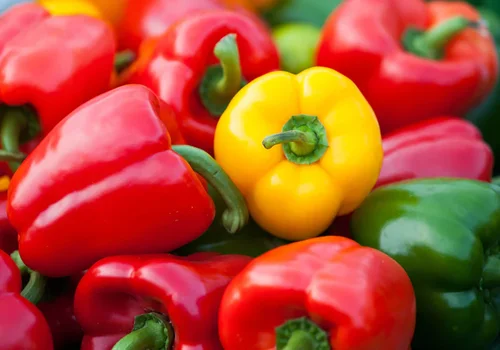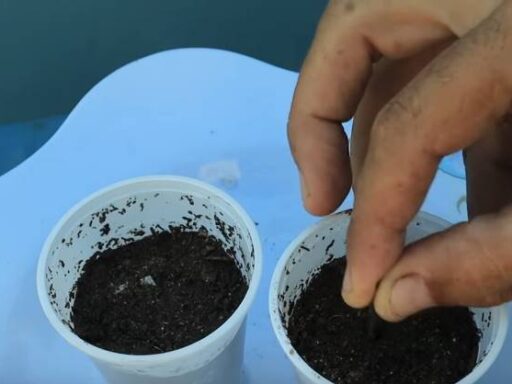If there’s one common question gardeners face in the summer, it’s: “What do I do with my garden’s harvest? How can I possibly consume everything my garden produces?” While it can be overwhelming to see your garden yield an abundance of fruits and vegetables, managing this bounty is essential to prevent food waste and save money. In this article, we’ll explore four effective strategies to maximize your garden’s harvest, making sure you use every bit of produce without it going to waste.
Tip #1: Adjust Your Grocery Shopping Habits
The first step to maximizing your garden’s harvest is by altering your shopping habits. Often, people fall into a routine of buying the same groceries week after week, regardless of what’s growing in their garden. As a result, much of the garden produce ends up unused and wasted.
To prevent this, commit to eating primarily from your garden. Shop differently when your garden is producing. Buy only what you cannot grow—such as meat, eggs, and dairy—and let the rest of your meals revolve around your garden produce. This not only reduces food waste but can save you hundreds of dollars a month. Many gardeners are surprised by how much food they can consume once they adjust their meals to include more home-grown vegetables and fruits.
By becoming a seasonal eater, you’ll also improve your health. Supermarkets often offer out-of-season produce, which can be bland and lacking in nutrients. Eating only what’s in season, fresh from your garden, ensures you’re consuming higher-quality, better-tasting food.
Tip #2: Preserve and Store Your Food
Learning to preserve and store your garden’s produce is the second key to maximizing your harvest. Canning is an excellent method for preserving acidic foods like tomatoes, pickles, and jams. This process involves placing produce in sterilized jars and using a water bath to seal them, ensuring a long shelf life. Properly preserved jars can last for up to a year or longer.

If canning isn’t your preferred method, freezing is another option. Vacuum-seal your chopped veggies and store them in the freezer for future use. Additionally, quick-pickling vegetables or making jams to store in the refrigerator for short-term use are great ways to enjoy your garden’s produce longer.
For the entrepreneurial spirit, you could turn your preserved goods into a side business. Selling homemade jams, pickles, and sauces can generate extra income while ensuring nothing from your garden goes to waste.
Tip #3: Share with Others
If you find yourself with more produce than you can eat or preserve, sharing with friends, family, and neighbors is a fantastic way to maximize your harvest. Fresh, homegrown produce is often appreciated by those who don’t have gardens. Additionally, sharing strengthens community bonds and reduces waste.
For those looking to profit from their excess produce, consider selling it locally. Many farmers’ markets, co-ops, and CSA (Community Supported Agriculture) programs look for locally grown produce to sell. By connecting with these groups, you can turn your surplus into extra income.
Tip #4: Compost the Rest
Even with the best planning, some garden produce may become unusable due to pests, disease, or overproduction. When this happens, composting is the final way to ensure your garden’s bounty doesn’t go to waste. By composting, you recycle nutrients back into the soil, creating richer, healthier soil for future planting.
Be cautious not to compost diseased plants or produce infested with pests, as this can spread problems throughout your garden. However, healthy plants, trimmings, and food scraps can all be added to a compost pile to decompose and enrich your garden’s soil.
Conclusion
Maximizing your garden’s harvest is not just about avoiding food waste—it’s about making the most of the time and effort you put into gardening. By adjusting your grocery shopping habits, preserving and storing food, sharing with others, and composting the excess, you can ensure that your garden is a source of nourishment, savings, and even income. Gardening, when done thoughtfully, can be an incredibly rewarding and sustainable way to feed yourself and others.
Frequently Asked Questions (FAQs)
- How do I adjust my meals to eat more from my garden? Focus on planning meals around the produce your garden is currently producing. Minimize store-bought produce and buy only what you cannot grow, like proteins.
- What’s the best way to preserve garden vegetables for long-term storage? Canning acidic foods like tomatoes and pickles is a great long-term option. Freezing vacuum-sealed vegetables is another effective method.
- Can I sell my excess produce? Yes, many gardeners sell their excess produce at farmers’ markets, co-ops, or to local restaurants. Check your local area for CSA programs as well.
- What should I avoid composting? Avoid composting diseased plants and pest-infested fruits, as they could spread problems throughout your garden.
- How much money can I save by eating from my garden? You can save hundreds of dollars a month by reducing grocery purchases and eating primarily from your garden.
- How long can canned vegetables last? Properly canned vegetables and fruits can last for a year or more if stored in a cool, dark place.
- What are the health benefits of eating seasonally? Seasonal eating ensures you consume fresher, more nutrient-dense food, and helps reduce cravings for processed, unhealthy options.




